A CYCLING ENTHUSIAST’S SPENDING PRIORITIES

Ever wonder what you should spend your cycling money on?
Do you start with a clear idea of what performance and outcomes you want from that spending over time, what combination of gear, kit, and other things will get you there, and a budget and set of priorities to guide you down that path?
Or, do you go from one purchase to the next, trading off what looks good and excites you with what you can convince yourself (and partner) you can afford at the time?
Fellow reader and enthusiast Cody got me thinking about this topic with his question:
…have you ever written a post on how you would approach budgeting purchases from an enthusiast’s standpoint? For instance, if an enthusiast had X dollars to spend, how would you recommend spending it for optimal quality across different products such as bikes, wheels, components, shoes, helmet, etc.?
While I always recommend products within each category of gear I review, I’ve never directly answered the question Cody asks – where to prioritize your budget across different product categories.
So with a chapeau to Cody for inspiring this post, here’s my attempt to answer his question.
LET’S HAVE A GO AT IT
Of course, this is an almost impossible question for me to answer uniformly even for the subset of us that fit the description of the road and gravel cycling enthusiasts I write this site for.
Yes, we are “roadies” or “groadies”, serious and committed cyclists, riding 4-6 days a week, outdoors and indoors, over many thousands of miles or kilometers every year, competitive mostly with ourselves to get fitter and faster. We enjoy a great time building new friendships and riding with old buddies, targeting events to measure ourselves, and sharing in the cycling experience.
And, among other things that uniquely define us, we do spend a lot of money on some combination of cycling gear, kit, training, events, travel, and other wants and needs to support our riding passion.
Yet each of us starts from a slightly different place. We have unique combinations of goals, gear, kit, abilities, fitness levels, financial means, non-cycling expenses, and levels of partner support.
But heck, coming up with recommendations for enthusiast spending priorities to answer Cody’s question is a fun exercise and may help some of you make better decisions, become better cyclists, and enjoy riding more.
Perhaps even better, I hope what I’ll share below will get you thinking about where to spend and save your cycling money, draft up a budget, and tell your fellow enthusiasts what you’ll be buying in the comments section at the end of the post.
So whether this turns out to be a useful guide or just a starting point for creating the spending priorities for your specific situation, allow me to have a go at my answer to Cody’s question and get you thinking. Hopefully, we’ll all get something out of it and make some better spending decisions.
Related:
How and Where to Buy Bikes Online
The Best Online Bike Store Rankings
WE DO HAVE SOME IMPORTANT THINGS IN COMMON
As road and gravel cycling enthusiasts, I think it’s fair to say we all want to ride faster, ride a lot, are willing to invest time and money to do both, but probably don’t have an unlimited budget.
And even if you have an unlimited budget or even a generously limited one, you are far from home free. The reality is that the cycling industry has undergone a lot of technological and economic changes since the pandemic.
A lot of cycling gear has gotten better. But that better gear often doesn’t always mix well with the gear you already have and see no reason to replace. Rim brake to disc brake. Manual shifting to electronic shifting. Wider tires and wheels, some too wide for your current frame, others that require you to learn new tricks around tubeless tires and inflation pressures. Kit that wicks better, keeps you cooler or warmer, ventilates your head better, or gives you better vision on or off road.
Amidst all of this, prices of most gear have gone up. Yet oversupply post-Covid has led to waves and waves of sales. And the biggest discounts are often on gear and kit that are a season or two old and sometimes underperform the latest stuff, though a lot of current model products also go on sale.
So our desire to ride faster, ride a lot, and invest in our riding passion along with living in a cycling world and a broader one of uncertainty, are the things we now have in common.
That all provides me a good baseline for suggesting cycling spending priorities.
Find what you're looking for at In The Know Cycling's Know's Shop
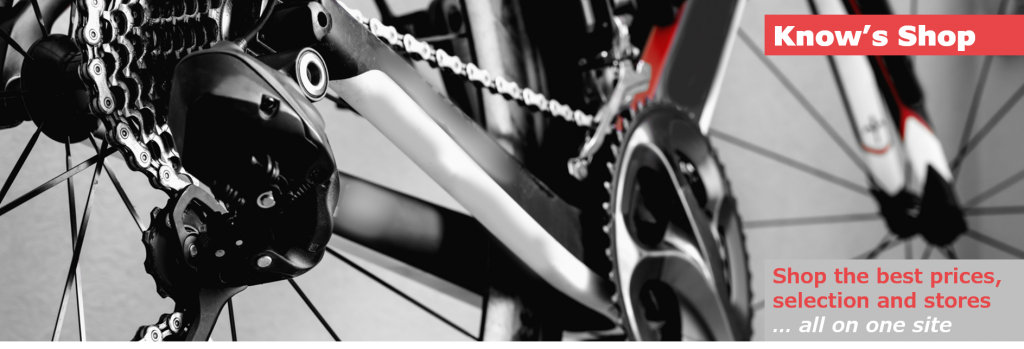
- Compare prices on in-stock cycling gear at 15 of my top-ranked stores
- Choose from over 75,000 bikes, wheels, components, clothing, electronics, and other kit
- Save money and time while supporting the site when you buy at a store after clicking on a link
START BY DOING WHAT YOU DON’T NEED TO SPEND MUCH ON
Even though I write cycling gear reviews and link you to the best stores that sell gear, I’ve long found that the right products are far down the list of what will make you faster and help you ride more. For the most part, accomplishing those two things requires discipline more than money.
While I update them periodically, I wrote two posts back in 2015 that still hold up well today about 10 ways to ride faster, roughly in order of what provides the biggest benefit to getting faster.
Part 1 goes through the top 6 ways and is mostly about training and technique. Some of these require spending some money but many don’t.
Part 2 is about gear and kit and covers the next 4 ways, two of which require spending serious money on products to make you faster.
I’ll shamelessly refer to those and other posts I’ve written as I work through the rest of this one.
Let’s roll.
Get mentally fit – Setting riding goals – speed, distance, how often, along with other performance measures, milestones, trips, events, etc. – and keeping a positive mindset through the ups and downs of a season will make you faster with whatever gear you currently have.
Don’t believe me? Research has shown it to be the case.
It does take a personal commitment of time, mental energy, and perhaps an app or a coffee-money level subscription to a tracking tool like Training Peaks to keep you progressing along. There are a good number of links in my Part 1 post about riding faster that can help you set the right kind of goals, stay positive, and show you why this works.
Train with a plan – Once you have goals, a positive mindset, and a commitment, then having and following a plan designed to achieve and support them can provide a huge boost to your speed and power, ability to ride longer, and the thrill and achievement you get from riding.
While you may plan to get 2 mph, raise your FTP 10%, target 3 big events, or even just ride more regularly in the midst of your busy life, you can’t just will your way to doing it. Finding and following a training plan that’s geared to reaching your goals, the kind of riding you do, how much time you have, and that measures and adjusts as you make progress, builds in the appropriate amount and time for recovery, etc., will make a world of difference in nailing those goals.
While it’s the most tailored way to go, you don’t need to hire a personal coach for 2 or 3 hundred a month. Packaged and customizable training plans or services that cost $20 a month and even less if you get an annual subscription or buy them a la carte will get you locked in on your goals and keep you motivated.

A couple of weeks doing structured workouts, yoga, and virtual group rides while building my base fitness during the winter
I have used many of the leading programs out there and did a comparative review of four of the best that take different service approaches. They each have strengths, but if you pick one that has the options that fit you and follow it, your performance and pleasure will improve markedly.
YOU WILL HAVE TO SPEND TO TRAIN RIGHT
To get the most from these training tools, you should spend some money on four products:
* Heart rate monitor – You can pick up a decent one for US$50 to $100 at Amazon. I use a US$50 Wahoo Tickr.
* GPS bike computer – These will read your heart rate, speed, cadence, and power and also navigate your route when riding outside. With some services, you can upload your training program to these head units to display your workout for indoor and outdoor rides and track your results.
I’ve compared and recommended the Wahoo Roam V2 or the Garmin 840. You can spend more on bigger units with color touch screens and other cool functions but you don’t need them to train well.
* Power meter – While you can train based on your rate of perceived exertion (RPE) or heart rate, using a power meter is by far a more effective way to produce results. I explain why in this post.
Most cycling enthusiasts need only spend US$250 to $500 for a good power meter that is built into your pedal (reviews and recommendations here) or your crank arm (here). Here again, you can spend more on added functionality, but you really don’t need more than a single-sided solution as I explain here.
* Indoor trainer – If you are a true enthusiast, you’ll likely ride 4-6 days a week year-round. For most of us, that means spending a fair amount of time riding indoors. Without changes in terrain and the distractions of cars and traffic lights or the limitations that cold or lousy riding weather can bring, indoor training can be the most time-effective and productive way to train and you’ll need a stationary trainer to do it.
Indoor trainers start at $150-$300 for a set of rollers or fluid trainer where you put your bike and power meter on or in the trainer. At the other end of the price spectrum are smart trainers and smart bikes that can US$500 to $1300 but will give you very precise, effective, and life-like training solutions.
What you actually need will depend on how much time you plan to ride inside, how much refinement you want, and how much money you have to spend. DC Rainmaker does a good job of laying all of this out.
If you can afford it, my take is that you should get a smart, direct-drive trainer. It will be money well spent if you want to go faster and commit to using it, far more so than a new wheelset or almost any other major purchase you can make.
There’s a lot of technology that goes into these trainers and I would stick with the leading brands Wahoo, Saris, Elite, and Taxc. You’ll have the best luck (and support the site) using these links to the trainer category pages at recommended stores Competitive Cyclist and Planet Cyclery in the US and Merlin in the UK and Europe.
TAKE A SPENDING BREAK AND GET EVEN FASTER
There are three more “free” ways to get faster and enjoy your time more on your bike before laying out money for gear and kit.
* Improve your riding technique – How good are you at putting effort into every part of your pedal stroke? How appropriate is your cadence to the terrain you are riding and your own physiology? How steady do you hold it? Are you a quick, agile, smooth bike handler? Do you brake at the right times, corner well, and accelerate out of them? Do you draft and paceline well? Do you use a paceline or your riding partners to manage your energy optimally over a long ride?
If you are an experienced roadie, you likely have established techniques and skills that do all of these things. But ask yourself, are they optimum? Can you try or learn some new things?
If you are a less experienced or skilled cycling enthusiast, there are big opportunities to gain speed and endurance from these techniques. I go into each of these in more depth and with helpful links here.
* Position yourself better and longer – As I’m sure you are aware, the biggest aero drag on a bike comes from our body position. While most roadies don’t want to ride like triathletes to go faster, we can ride more efficiently with less drag by making a few changes to the position we may naturally take on the bike.
Being conscious of where to put our hands, what angle to hold our forearms, and doing it longer during each ride will allow us to pick up a lot of free speed, especially when we are riding north of 20mph/32kph.
* Drop/hold your weight – Allow me to be direct here. If you lose a few pounds, you will go faster.
It’s kind of crazy how much some of us are willing to spend to save grams on a bike, wheelset, component, etc. before getting serious about dropping some of that extra weight we’ve added around our guts over the years.
I put together a chart showing what it costs and how much time you would save with a 300g lighter wheelset, 4lb lighter bike or 5lb/2.3kg lighter body.
I think you know where this is going. If you are putting the discipline into your training, add it to your eating as well and you’ll drop or at least hold your weight down. It will make you faster.
* Eat and sleep better – Fueling yourself the right way before, during, and after your ride will give you the energy to go faster, keep your power and speed where you want it throughout a ride, and be ready to do it all again the next day.
Similarly, sleeping longer, more consistently, and with less interruption will get you the most out of your rides.
I know. This is Captain Obvious stuff. There’s a ton of research and info out there that shows how to do it and what the payoff is.
But, think about it. Do you follow a plan to fuel your ride? Do you have or try to keep a consistent sleep schedule?
If you do, good. If not, build a fueling plan and sleeps schedule and commit to them. It will make you faster.
KIT UP FOR SPEED BEFORE SPENDING BIG ON GEAR
Wearing better kit – helmets, clothes, shoes, etc. – can give you nearly as much speed improvement, added endurance, and comfort while putting less of a dent into your budget than a new bike, wheels, components, or some other gear.
A US$200 aero road helmet, many that look and vent similarly to a standard road one, can cut 2/3rds of the drag you’ll save from a deeper wheelset that costs 10x more.
Closer fitting bibs and jerseys, when compared to loose-fitting ones, can reduce a similar amount of wind resistance as an aero helmet. A good performing summer bib and jersey together will cost 1.5-2x that of an aero road helmet and you obviously can’t wear it as often as you do the helmet. But, on those days you want to go your fastest and be your most comfortable, these can really improve performance without taking a big dent out of your budget.
And during the cooler fall and early spring months, wearing the right combination of warm, comfortable, and well-fitting clothing will keep you riding and training longer and more effectively before you’re forced to ride inside.
It’s harder to measure the speed or power benefit you get from a great set of road shoes that will set you back $250 to $400. But clearly, a better fitting shoe with a stiffer sole will transfer the power from your legs to the road more efficiently than a loose-fitting one and will extend the time you can comfortably spend pedaling on your bike.
And about those legs. Shave them regularly and you can reduce your drag as much or more than any of the kit savings above.
LOOK 2-3 YEARS INTO YOUR FUTURE BEFORE SPENDING ON GEAR
Remember Cody’s original question – how would you recommend spending [your budget] for optimal quality across different products such as bikes, wheels, components, shoes, helmet, etc.?
We’ve already gotten faster, fitter, and are enjoying our rides more from the training, technique, and kit suggestions above while getting more bang for our bucks than if I’d started by answering his question directly.
Now it’s time to answer the part of his question about bikes, wheels, components, etc. Together, they can provide the biggest benefit but will also cost the most.
Depending on the gear you have now, the amount you can spend over the next 2-3 years, and your willingness to adopt new cycling technology, and specifically road disc brake bikes, the answer will be different.
Here are three budget paths I see based on your answer
* If you already have a road disc bike – Road and gravel disc bikes are no longer new. Indeed, if you look at the enthusiast-level bikes on sale these days, you’ll only find ones with disc brakes. That’s the case if you are looking at endurance or racing road bikes or any flavor of gravel bikes.
What is new is the updated aero and integrated cockpit component designs built into today’s road disc bikes and the broad range of gravel bike designs to choose from. And new groupsets from SRAM and Shimano come on the latest road disc bikes along with Campy gruppos as well on gravel ones.
If you aren’t feeling the urge or don’t have the budget to buy a new bike, you can move on to improving your performance with a better wheelset than the one that likely came with your bike or that you initially upgraded it with.
My rule of thumb has been to spend about 40%, plus or minus 10%, of the bike’s retail price on a good wheelset. That amound will usually get you the full potential of the performance built into the bike’s frame and components.
What good is it to have a fast bike and slow wheels that hold you back? A better wheelset can get the most out of what you spent on the bike and the time you are investing in training and technique.
That means if you own a $5000 bike, you should expect to invest $1500 to $2500 on a set of wheels. I’ve reviewed a lot of road disc wheels across the range of categories I call value-carbon, all-around, aero, climbing, and gravel. If you want to look at just one review, this one gives you my recommendations for the best carbon road bike wheels.
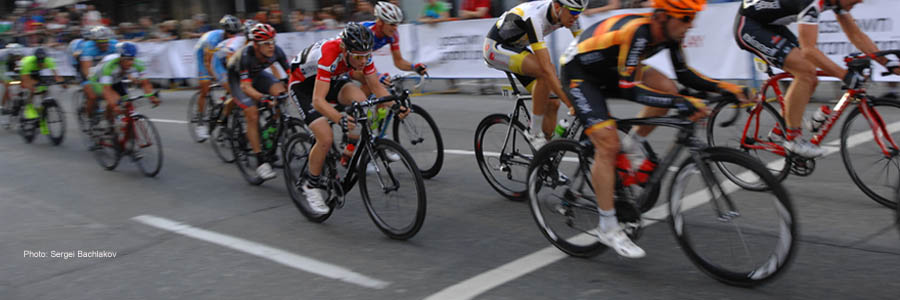
If you aren’t sure which type of wheelset best fits your goals and rider profile, here’s one that will help you figure out how to choose the best for you.
While many aren’t ready to convert over from clinchers yet, a pair of tubeless tires will work on almost any modern wheelset. For US$125 to $200 for the pair, they can give you better speed, handling, and comfort. You do have to learn some new tricks to install and maintain them but, for my time and money, the performance I get out of them is certainly worth it.
Upgrading your drivetrain components, most notably from a mechanical to electronic groupset, can help you go faster by making your shifts easier and more efficient. Going with an electronic shifting, hydraulic braking groupset on your road disc bike will also reduce your maintenance and make your riding experience more enjoyable.
Making the riding experience more enjoyable is often the biggest draw of electronic shifting. Once you’ve experienced it, it can be hard for some to go back. I have bikes with both mechanical and electronic shifting and while I still feel totally capable and comfortable with mechanical shifting, I have a much better time and feel more dialed-in riding my electronic gruppo.
As with wheelsets, electronic groupsets are sold at different price levels. Unless you are racing, most enthusiasts will be well served with a Shimano Ultegra, SRAM Force, of Campagnolo Chorus level groupset. The latest Shimano 105 and SRAM Rival electronic groupsets are slightly heavier but work as well and perhaps better than earlier generations of their higher-level siblings. Unfortunately, a new electronic groupset sells for US$2000 and up and rates as more of a nice-to-have than a need-to-have budget item.
Bikes that already come with hydraulic brakes and mechanical shifters don’t require you to change out the entire groupset to go electronic. Adding the electronic shifters, derailleurs, batteries, etc. to make the conversion will typically cut the cost by a third of what you’d pay for the entire groupset.
* If you want to upgrade from a rim brake to a disc bike and can afford to buy one – This is a big spend and commitment to your cycling future. There are many performance reasons to go with disc brake bikes – they enable you to ride faster, offer greater versatility, and are safer.
Almost as important, the gear used with road disc bikes such as wheels and components is probably already better than those on rim brake ones and will continue to advance. As fewer new enthusiast-level rim brake bikes are introduced, suppliers are slowing or ending their investment in them.
Critical to getting the right road disc bike or any new bike is getting a good bike fit. For somewhere between $200-$400 for a good fit and any modifications you might need in your stem, handlebars, seat post, saddle, or pedals, you will get the most efficiency and comfort for your unique anatomy and flexibility. More power and comfort with less chance of injury.
For the same reason, it’s a good idea to update your fit with your existing bike every 2-4 years especially as your fitness, age, lifestyle, comfort, or an injury affect your ability to get as much as you can out of your body on the bike.
The fitting and new bike buying process can be a bit challenging, especially as there are fewer bike shops open and more selections online. This post gives you a guide on how to do it right.
After researching customer satisfaction ratings, bike selection, online support, and return policies of nearly 100 online stores around the world, I’ve recommended six you shop at first for road disc bikes – Competitive Cyclist in the US, and Tredz, Cyclestore, Sigma Sports, and Rutland Cycling in the UK, and Bike24 from Germany.
You can also see the selection, compare prices, and buy from over 7,000 road, gravel, cross, mountain, electric, commuter, and kids bikes and frames from some of these and others I also recommend in my Know’s Shop where I’ve aggregated the inventory and linked you to the stores selling these bikes.
Once you have a new road disc bike, the same recommendations about wheelset and component spending priorities I laid out in the section above apply here.
* If you have a rim brake bike and plan to keep using it – The number of enthusiasts who ride rim brake bikes outnumbers those riding disc ones. It could be another 5-10 years before this “installed base” of rim brake bikes is surpassed by those that have bought new disc brake ones.
While you’ll clearly save money staying with your rim brake bike, you’ll also miss out on the greater performance improvement coming from investments cycling companies have and will put into making better road disc bikes, wheels, and components.
That includes bikes that are more aero, responsive, and lighter, wheels and tires that are wider, more comfortable, handle better, and roll faster, and groupsets that give you greater range, better braking, and require less maintenance.
The development of rim brake bikes and gear appears to have slowed to a trickle. Most of the major bike, wheelset, and component suppliers are no longer introducing new rim brake versions of those products. Many no longer make or sell them at all.
That said, there are still some good products to choose from that will help you go faster, longer, and enjoy yourself more by upgrading what you may have now with better rim brake wheels, tubeless tires, and electronic groupsets at roughly the same price levels I described in the sections above for their disc brake siblings.
CONSIDER A RANGE OF OUTLETS FOR BUYING AND SELLING GEAR
While local bike shops continue to play an important role in serving our product and service needs, shopping at an online bike store can save you time and money and provide the kind of product selection, delivery speed, and user experience that many local bike shops can’t compete with.
Of the nearly 100 stores I track, I rank Competitive Cyclist, Tredz, Merlin Cycles, and bike24 as the best online bike stores for road cycling enthusiasts based on their prices, selection, customer satisfaction, and support.
Buying a used bike, wheelset, or other gear either from a cycling friend or online marketplace is always an option if you are working with a tight budget and don’t need that new gear adrenaline to motivate your performance.
And you can also find good value gear on eBay if you know what you are looking for. I’ve also had good success selling gear on eBay that I’ve bought to test for reviews. If you’re looking for that N+1 bike or event-specific wheelset, don’t miss the opportunity to backfill your budget a bit by selling what you no longer ride and that may be taking up space in your bike storage area.
* * * * *
Thank you for reading. Please let me know what you think of anything I’ve written or ask any questions you might have in the comment section below.
If you’ve benefited from reading this review and want to keep new ones coming, buy your gear and kit after clicking the store links in this review and others across the site. When you do, we may earn an affiliate commission that will help me cover the expenses to create and publish more ad-free, paywall-free, and reader-supported reviews that are independent, comprehensive, and comparative.
If you prefer to buy at other stores, you can still support the site by contributing here or by buying anything through these links to eBay and Amazon.
You can use the popup form or the one at the bottom of the sidebar to get notified when new posts come out. To see what gear and kit we’re testing or have just reviewed, follow us by clicking the icons below.
Thanks, and enjoy your rides safely! Cheers, Steve

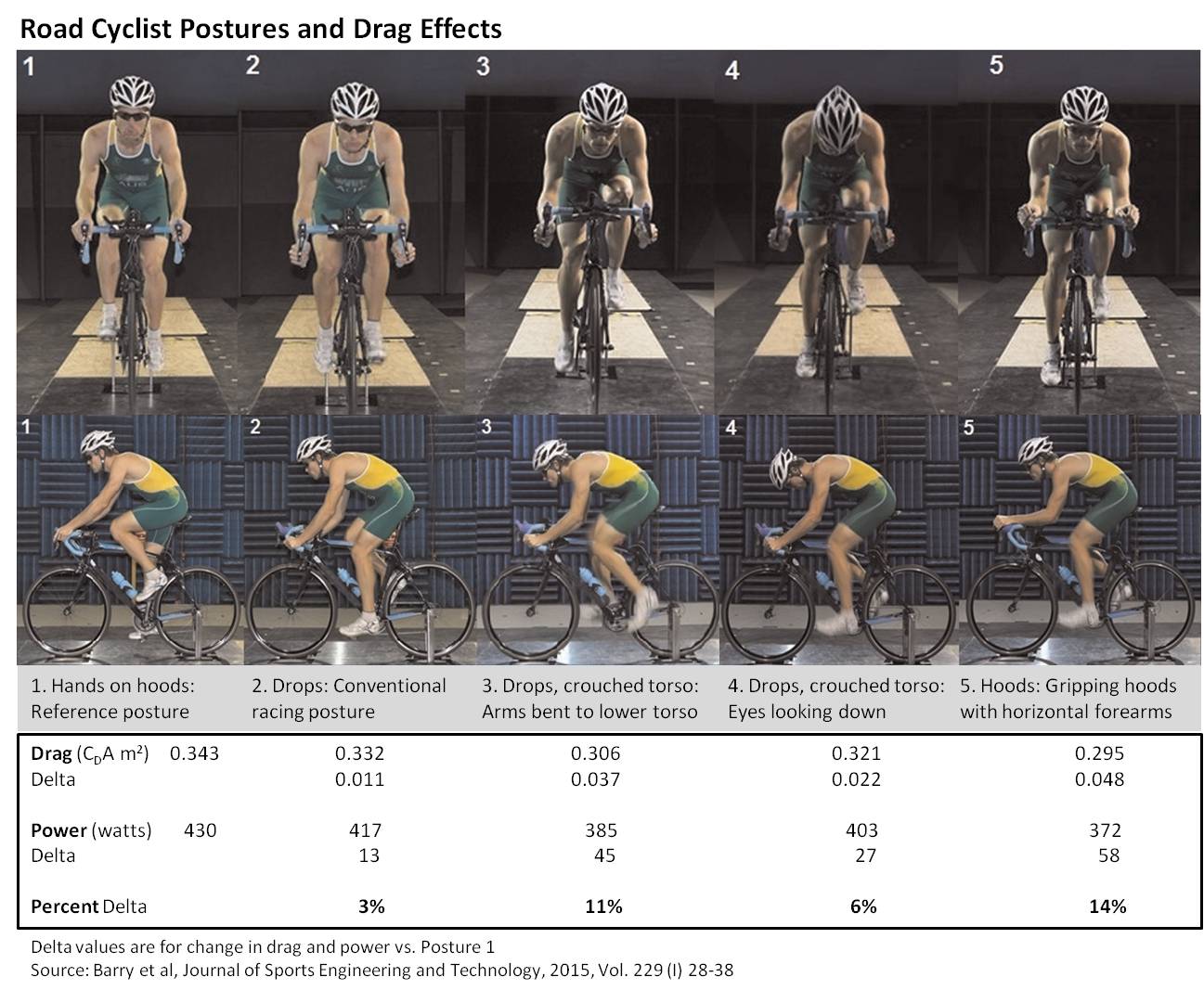
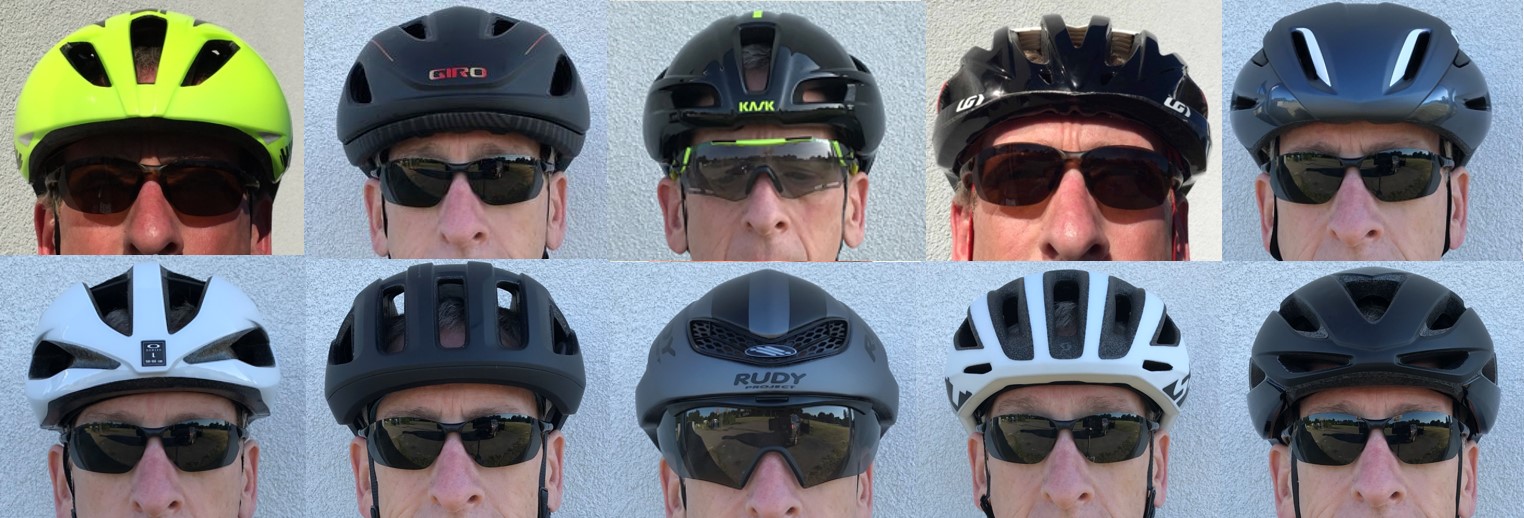


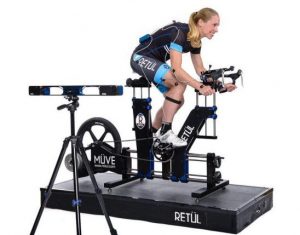
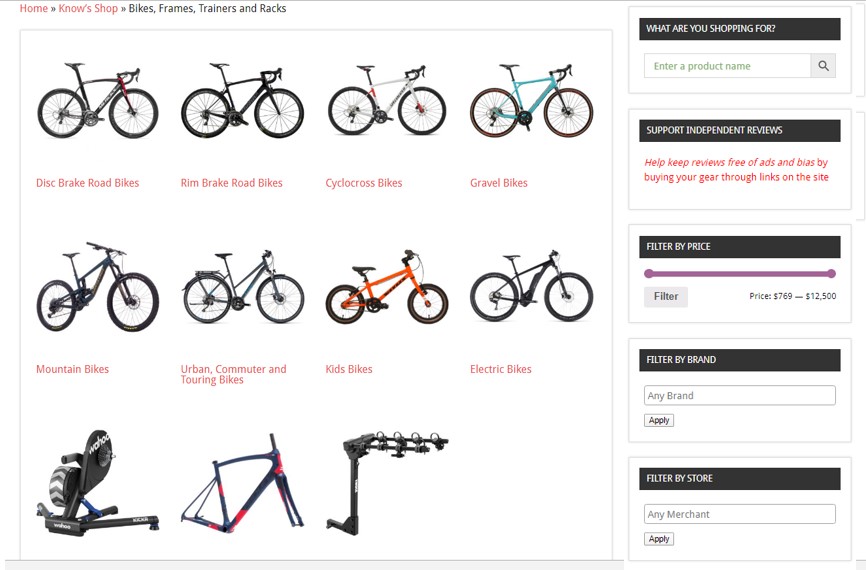
This is the best comment response ever! Thanks so much for this post, Steve, and thank you for all of your advice for your fellow enthusiasts!
Very thorough overview of the cycling “enthusiast’s” quandry when allocating limited dollars to their chosen sport. However, I think you lost sight of the word budget in the original query. And no mention of spouse or children here who might have impact on the same. If I tote up your estimates correctly, I’d spend plus or minus $3,000 on HR monitor, GPS computer, power meter, computerized trainer, helmet, aero clothing, shoes, and bike fit before even putting a foot on my chosen steed. For which I ought also to put aside some $5,000, plus $2,000 or so for better wheels inevitably needed. From all this, I must deduce that you believe your average reader can allocate some $10,000 just to enter the sport suitably armoured. Never mind about ongoing costs such as bike tire prices rivalling auto tires. To that I say, you can have a lot of fun (not to worry about speed) and spend a lot less money. And not have your spouse grumbling about spending a few hundred bucks on running shoes instead.
Gary, Thanks for your feedback. I wasn’t suggesting you go out and spend all of this at once or even over a specific period. Rather, this is a list of priorities as in, what to do first, next, etc. over whatever time period works well for each cyclist’s individual situation. Yes, there are some single major purchases along the way that you can’t buy (although can finance) over time. And yes, this is an expensive sport. And very much, yes, spouse, family and non-cycling budget considerations need to be involved in the decision. That last one is a harder post to write but I suspect each of us has our own approach to making cycling spending work within our lives else we would be runners or adult league soccer players or couch potatoes! Steve
Steve,
The only beef I have with this article is the statement that you can get bikes lighter now, or that offer less maintenance, than 5 year old rim brake bike. You can’t get lighter and despite the benefits of disc brakes they are absolutely more work, enough to offset any other time savings in maintenance. Add in enclosed cables on many bikes, and they are indeed becoming more and more complex to work on. This is part of progress, perhaps, and worth it for most. But lighter and simpler they are not.
As I get older I’m a bit more fair-weather on the nice bike, and there are no alps around here to burn up my carbon rims on the downs, so I’m quite happy to save my money and ride a lovely sub-1000g frame that is short one cog at the back (though I can still put a long cage on it if I need range). For me a new bike would be purely about aero, and I’ve yet to ride an aero bike that’s really comfy, so that trade-off isn’t a slam dunk either.
I’ve bought an aero helmet, deeper rims, and a power meter since my last bike. I love the new tech, but it’s always wise to be selective based on your use case, and not declarative. Some of your statements Thanks for all your efforts testing.